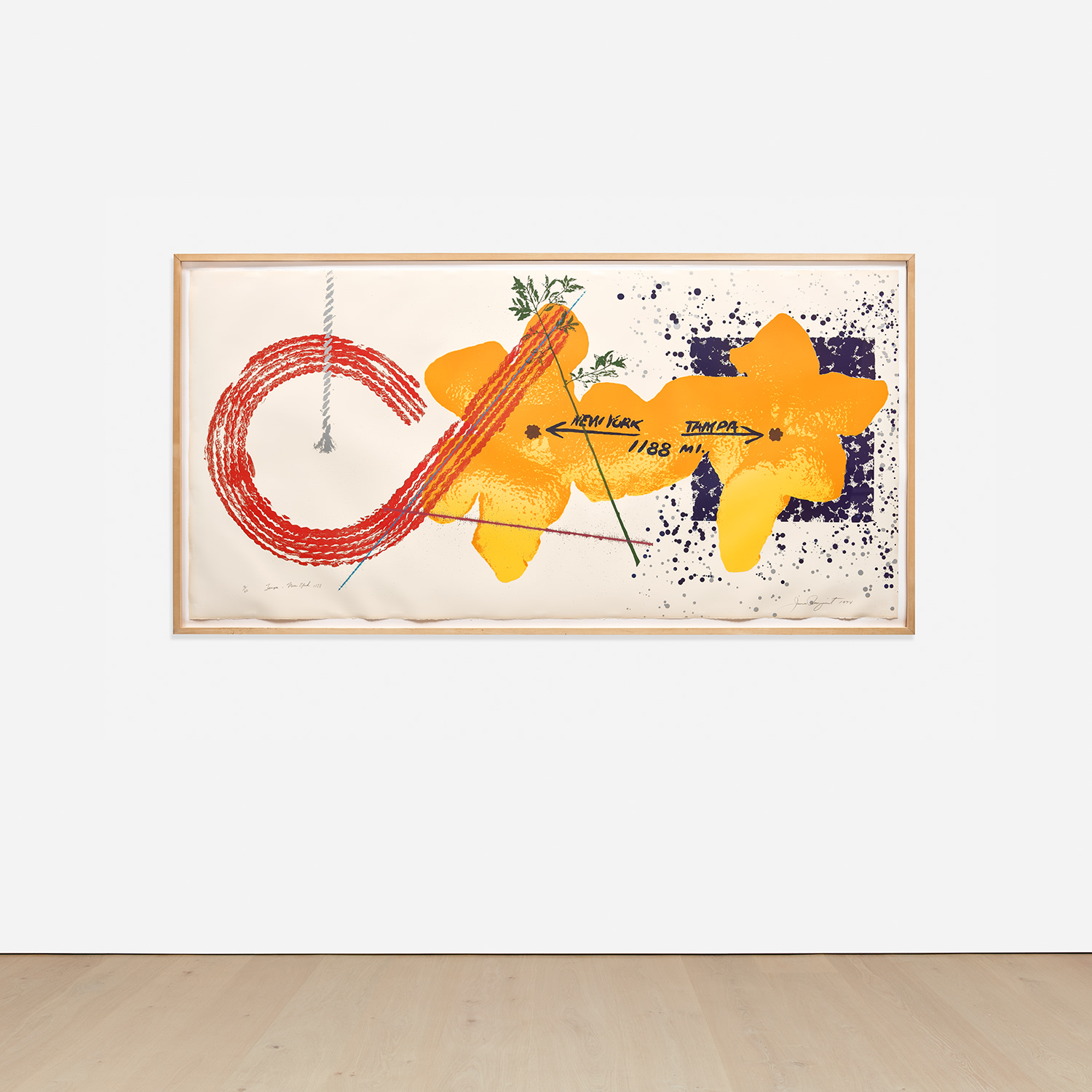



225
James Rosenquist
Tampa—New York 1188 (G. 81)
1974-75
Monumental lithograph in colors, on Arches Cover paper, the full sheet.
S. 36 1/4 x 74 1/8 in. (92.1 x 188.3 cm)
Signed, titled, dated and numbered 16/40 in pencil (there were also 3 artist's proofs), published by Graphicstudio, University of South Florida, Tampa, framed.